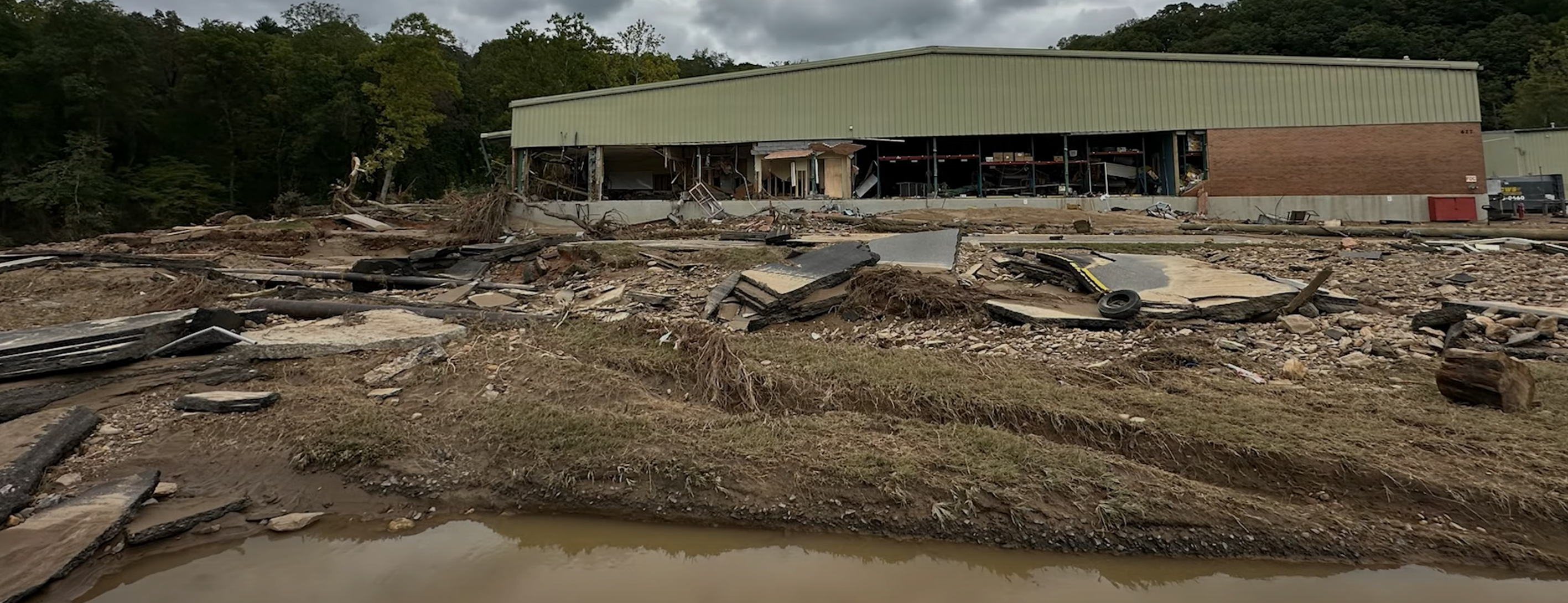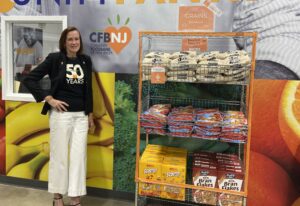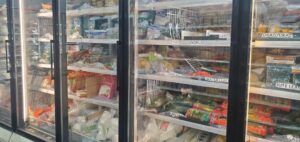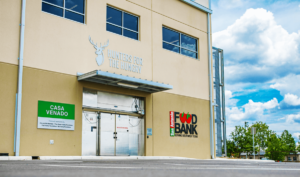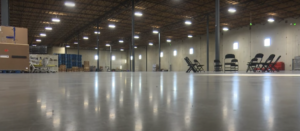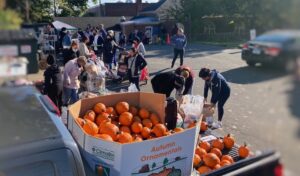The devastation that befell MANNA FoodBank, whose Asheville, N.C.-based headquarters and warehouse were completely destroyed during Hurricane Helene, unfolded slowly at first, and then suddenly.
As the storm was actively raging during the morning of Friday, Sept. 27, CEO Claire Neal was “obsessively” checking an app that tracked river levels. With its location next to the Swannanoa River, MANNA’s building had been prone to minimal flooding throughout its 40 year history, mostly in the parking lot. At worst, Neal expected perhaps a foot of water in the building, if flood waters rose to double what they had historically.
Neal was tracking certain markers – how high the river would need to be to reach the lot; to reach the building’s foundation. But at one point, the app refreshed to say the river had flowed higher than its ability to track it. “There would be no more readings,” said Neal, who came to MANNA as CEO about three years ago from a Seattle nonprofit. “Then we lost communication, and then my basement started to flood, and all of that happened at once.”

Now, about six weeks out from the disaster, Neal can look back and fully appreciate the groundwork that enabled MANNA’s team to begin distributing food within days of the hurricane, while also quickly transferring operations to a new warehouse. At the same time, she is concerned about the long-term implications of the disaster. “We’re thinking about not just the immediate emergency, which it certainly is, but what do we need to be doing to support our region for many years to come?” she said.
In the immediate aftermath of the flood, Neal was unable to get close to the food bank. Like many people, she was trapped in her neighborhood after the storm passed through, hemmed in on either side by fallen trees. On Saturday, once the trees were cut, the first place she headed was the Office of Emergency Management where she was told that the only way she could reach the food bank was by boat. On Sunday, when the waters receded, it was clear that the food bank had been ravaged. “In videos, all you can see is the roof sticking out. The water came in and was essentially like a washing machine,” Neal said.
Those early days were marked by a complete lack of communication. Leaders could not get in touch with each other, nor with staff. “It wasn’t until the end of the week that we were actually able to contact everybody and know that everybody was safe,” Neal said. “That was gut-wrenching.” Three staff members had lost everything. Many suffered damage from flooding and most went for weeks without power. Water for drinking and showering was scarce.
Those facts made it all the more remarkable that MANNA’s team stood up a daily food distribution starting on Monday, which was soon reaching about 1,800 families. In the mornings, the food bank collected food donations from people who had them to give, and it distributed them in the afternoons at a farmer’s market location. “We couldn’t get supplies in from outside, because all of those roads were closed. So we had to do what we could with what was available locally,” Neal said.
Fortuitously, the food bank had been in the due diligence phase of purchasing a new building when the storm hit. Within one week, it was able to secure an emergency lease and begin occupying the new building, which had not flooded. The new warehouse does not yet have freezers, coolers, racks or offices, but a rudimentary dock system has allowed it to receive big truck deliveries. “If we didn’t have this, I don’t know what we would have done,” Neal said. “It would have been a very different story.”
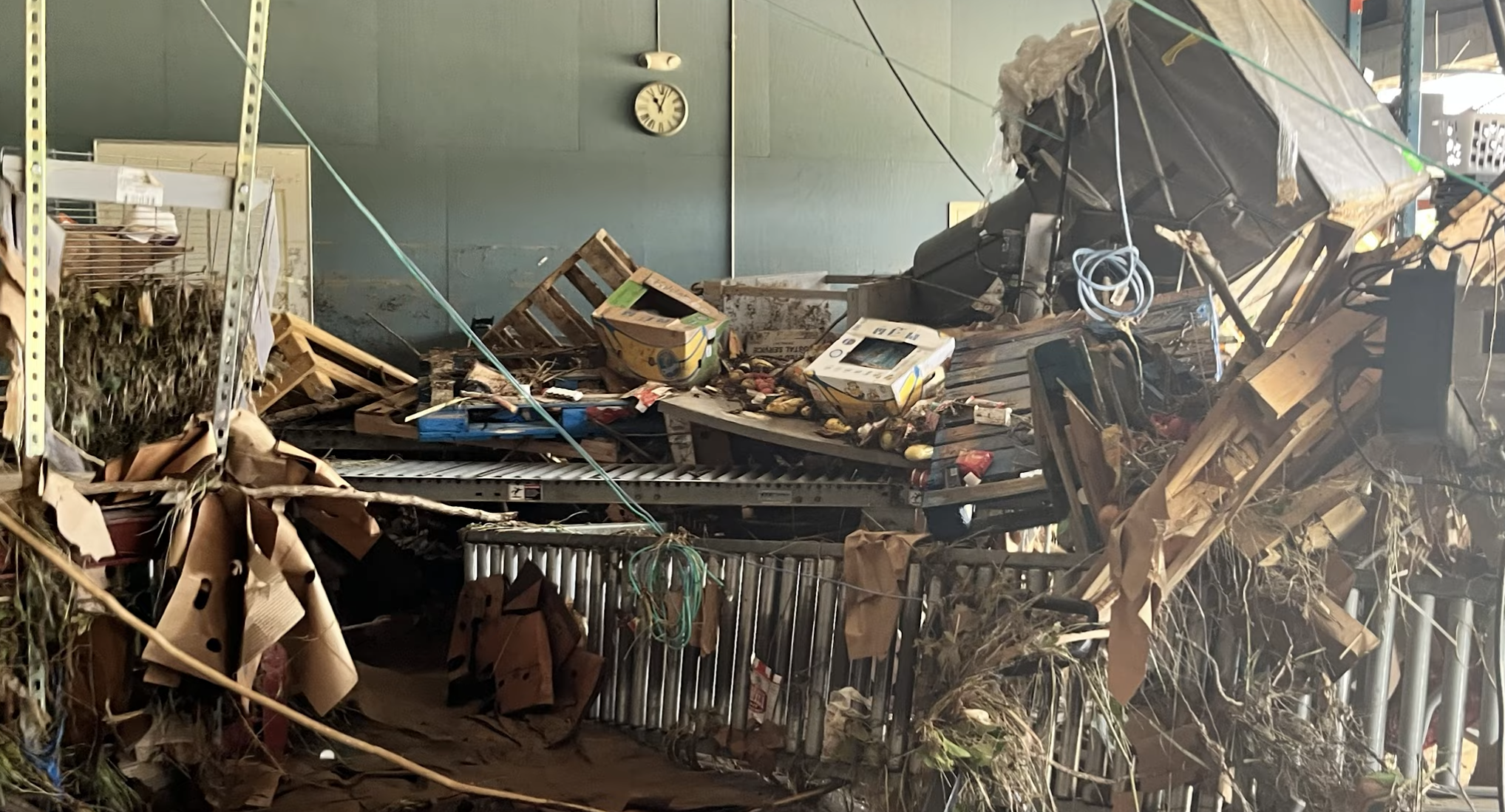
Five of MANNA’s 220 partner agencies lost everything and some remained unreachable for weeks. Even so, more than 100 continued to operate in some capacity throughout the emergency, and within a month or so, agencies were up and running in all 16 of the counties MANNA serves. While the food bank was able to successfully switch to a new inventory system on Oct. 21, as planned, pantries were not yet able to place orders for food, receiving only what was available.
The plans for MANNA’s new warehouse had been in the works since before the pandemic. Originally, the idea was to add onto the existing warehouse, but post-Covid, costs had risen so much that the food bank shifted to finding an existing warehouse to refurbish. MANNA had just located the new 84,000 square-foot space, which will double its capacity, in July.
Now Neal and her team are figuring out on the fly how to acquire the myriad items that they need – including little things like trash cans, cardboard boxes, pallets and laptops. “Right now I’m lucky to be sitting in a chair, but generally we don’t have chairs,” Neal said. “Just this weekend, one of the restaurants that had to close very graciously gave us their tables and chairs.”
The scale of the losses is sobering. The food bank will receive the maximum flood insurance of $1 million, which will not come close to covering its losses, Neal said. It is still piecing together FEMA funding and trying to understand the full financial impact of the disaster. While donations continue to come in from across the country, “we know that we’re looking at tens of millions of dollars beyond what we’ve already fundraised to even just get back to a baseline level,” Neal said.
In the meantime, Neal is focused on making sure employees are cared for. All employees, for example, were paid through Oct. 25th, whether they could work or not. That gave staffers the ability to address whatever personal needs they had, from bailing out the basement to taking care of the kids. In addition, volunteers have been coming in daily to serve meals, and resources like counseling and massages are available.
As operations slowly begin to return to some semblance of normalcy, Neal remains worried about the impact of the storm on the regional economy. On top of the turmoil experienced by residents, local farmers have been devastated, as has the tourism industry. “We want to make sure that we are supporting the long term sustainability for the region as well as we can,” Neal said. – Chris Costanzo
Like what you’re reading?
Support Food Bank News
